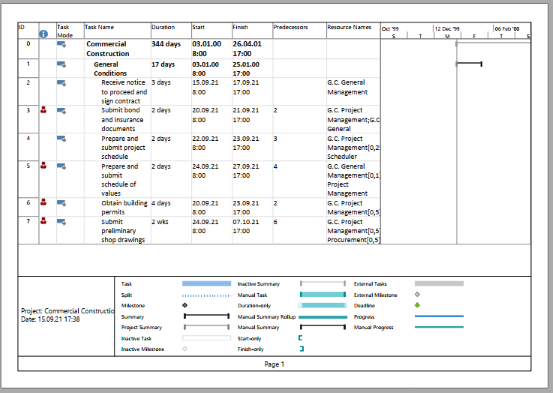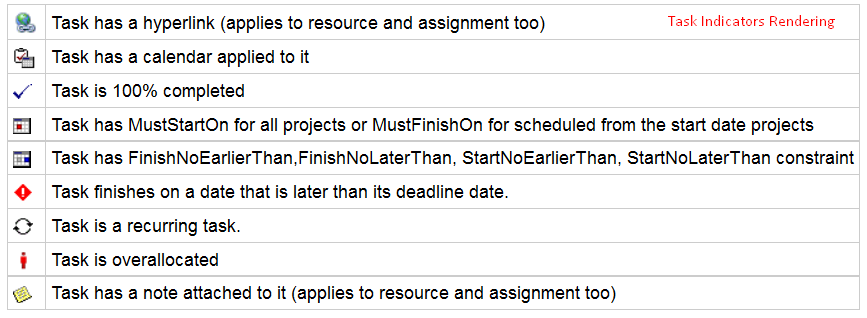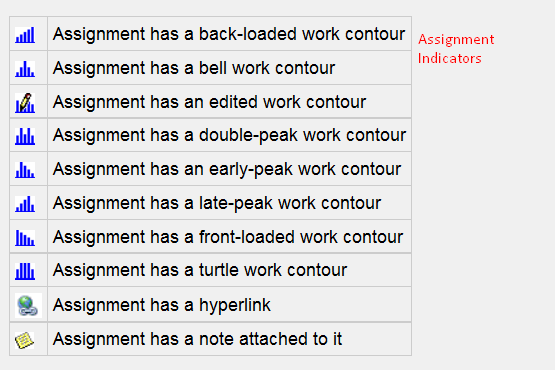Перетворити файл MPP Project Microsoft у PDF
PDF або портативний формат документа - це формат файлу, розроблений Adobe в 1992 році для представлення документів, включаючи форматування тексту та зображення. Microsoft Project дозволяє користувачеві експортувати дані проекту у формат PDF.
Це кроки для експорту даних проекту у формат PDF:
Припустимо, у вас є проект у проекті Microsoft.
- Виберіть пункт меню “Файл \ Зберегти як”
- Виберіть Місцезнаходження (наприклад, “Цей ПК”)
- У діалоговому вікні “Зберегти як” виберіть “PDF -файли (*. PDF) у” Зберегти як тип “.
- Натисніть кнопку “Зберегти”
- У діалоговому вікні «Експорт експорту» виберіть діапазон опублікування та натисніть «ОК».
В даний час вибраний перегляд буде надано у PDF -файл. Ось приклад вихідного файлу:

Aspose.tasks для .NET також надає можливість відобразувати погляд проекту у форматі PDF програмно. У цьому випадку вам не потрібно встановити проект Microsoft на вашій машині. Ця стаття дає детальний огляд різноманітності варіантів, доступних у Aspope.Tasks для експорту проектів до PDF.
Збереження файлу MPP MS Project як PDF
Клас [2) розкриває метод збереження, який використовується для збереження проекту в різних форматах. Метод збереження дозволяє передати дані проекту до PDF за допомогою типу перерахування SaveFileFormat.
Щоб зберегти проект для PDF:
- Завантажте файл MPP Project Microsoft.
- Необов’язково внести зміни до завантаженого проекту.
- Збережіть проект у PDF за допомогою одного з проекту. Ви можете використовувати або saveFileFormat.pdf, щоб зберегти проект із налаштуваннями за замовчуванням або PDFSaveOptions для налаштування варіантів експорту.
- Зверніть увагу, що ви не можете встановити значення проти програми та виробника полів через Aspose Ltd. та Aspose.Tasks for .NET X.X.X відображатимуться на цих полях.
Наступні рядки коду демонструють, як досягти цього за допомогою C#.
1Project project = new Project("New Project.mpp");
2project.Save("SaveProjectAsPDF_out.pdf", SaveFileFormat.PDF);Specifying a View to save to PDF
Microsoft Project supports different view such as ‘Gantt Chart’, ‘Task Usage’, ‘Resource Usage’, etc. Each view can be customized and these settings are stored in MPP file. Aspose.Tasks for .NET allows the user to examine and change these settings using Project.Views collection.
There are 3 ways to specify the View which will be exported to PDF:
- Do not specify a View explicitly. In this case Project.DefaultView will be rendered. If default view is missing, Gantt Chart view will be rendered.
- Use SaveOptions.PresentationFormat to specify value of PresentationFormat enumeration. In this case the view with the correspondent Screen property will be selected from Project.Views collection. If View is missing, the default settings are used.
- Use SaveOptions.ViewSettings property to explicitly specify the View object to render. If View object is specified, the value of SaveOptions.PresentationFormat is ignored.
Fitting Contents to Cell Size
Commonly, a task (or resource) name is so long that it is truncated when project views are rendered. Aspose.Tasks for .NET provides the FitContent property in the SaveOptions class to avoid truncation of task and resource names. The code example below renders a project to PDF format with the FitContent property set to true.
1Project project = new Project("New Project.mpp");
2SaveOptions options = new PdfSaveOptions();
3
4// Set option fit content to true
5options.FitContent = true;
6options.Timescale = Timescale.Months;
7options.PresentationFormat = PresentationFormat.TaskUsage;
8project.Save("FitContentsToCellSize_out.pdf", options);Printing or Hiding Legends when Rendering
To let you print or hide the legends on each page, the SaveOptions class provides the LegendOnEachPage property. If this flag is set to true, legends are printed on each page in the output file.
1SaveOptions options = new PdfSaveOptions();
2
3// Set the LegendOnEachPage property to false to hide legends
4options.LegendOnEachPage = false;Supported Graphical Column Indicators
Aspose.Tasks draws graphical column indicators when rendering project data to output PDF. The following graphical indicators are supported by Aspose.Tasks:
| Indicator Type | Graphical Indicator |
|---|---|
| Task Indicators |  |
| Resource Indicators |  |
| Assignment Indicators |  |
Saving to Multiple PDF Files
To save project data to multiple PDF files, set the SaveToSeparateFiles flag to true.
1Project project = new Project("New Project.mpp");
2PdfSaveOptions options = new PdfSaveOptions();
3options.SaveToSeparateFiles = true;
4options.Pages = new List<int>();
5options.Pages.Add(1);
6options.Pages.Add(4);
7project.Save("SaveToMultiplePDFFiles_out.pdf", (SaveOptions)options);Customizing TextStyle for Project Data
Aspose.Tasks for .NET API allows developers to customize the text style for over-allocated resources. By default, the style used for overallocated resources is similar to Microsoft Project (MSP), that is, red and bold. TextItemType.OverallocatedResources makes it possible to customize the color and style for the overallocated resources.
1Project project = new Project("New Project.mpp");
2SaveOptions options = new PdfSaveOptions();
3options.PresentationFormat = PresentationFormat.ResourceSheet;
4
5TextStyle style = new TextStyle();
6style.Color = Color.OrangeRed;
7style.FontStyle = FontStyle.Bold;
8style.FontStyle |= FontStyle.Italic;
9style.ItemType = TextItemType.OverallocatedResources;
10
11options.TextStyles = new List<TextStyle>();
12options.TextStyles.Add(style);
13project.Save("CustomizeTextStyle_out.pdf", options);Customizing Date Formats
Aspose.Tasks for .NET API allows developers to customize the date format using the DateFormat enumerator when rendering project data.
1Project project = new Project("New Project.mpp");
2project.Set(Prj.StartDate, new DateTime(2014, 9, 22));
3
4// By default project.DateFormat == DateFormat.Date_ddd_mm_dd_yy (Mon 09/22/14) customize DateFormat (September 22, 2014)
5project.Set(Prj.DateFormat, DateFormat.DateMmmmDdYyyy);
6project.Save("CustomizeDateFormats1_out.pdf", SaveFileFormat.PDF);
7
8// Export to date format 19/07/2016
9project.Set(Prj.DateFormat, DateFormat.DateDdMmYyyy);
10project.Save("CustomizeDateFormats2_out.pdf", SaveFileFormat.PDF);Setting Default Font
Setting default font during rending of documents helps when a font is not found. In such a case, the default font replaces the missing font and output is not affected. Aspose.Tasks for .NET API lets you specify the default font using the DefaultFontName property of the PdfSaveOptions as shown in the following code sample.
1Project project = new Project("New Project.mpp");
2
3PdfSaveOptions options = new PdfSaveOptions
4{
5 PresentationFormat = PresentationFormat.GanttChart,
6 FitContent = true,
7 UseProjectDefaultFont = false,
8 DefaultFontName = "Segoe UI Black"
9};
10project.Save("CreateProject2_out.pdf", (SaveOptions)options);